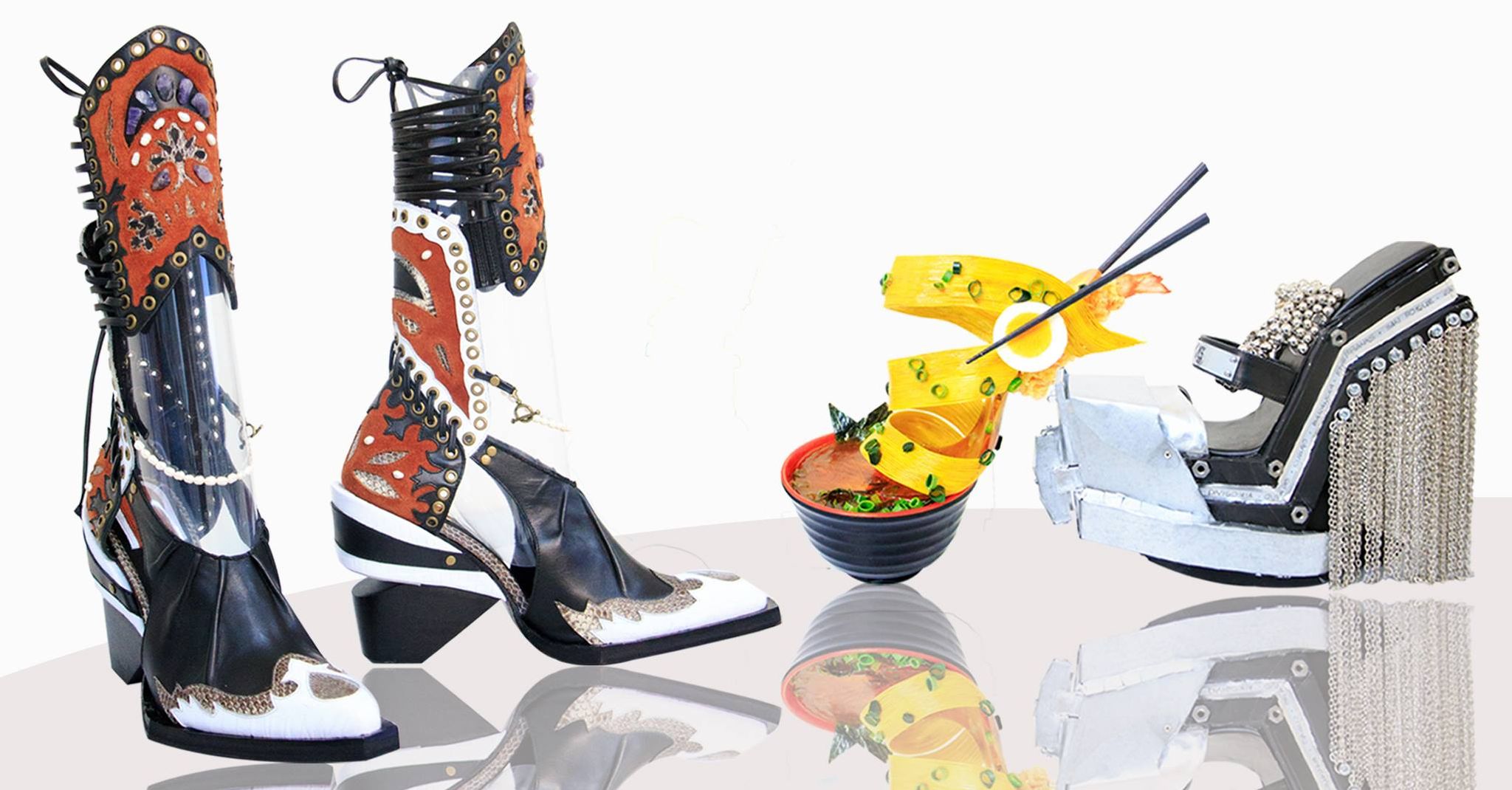Seven of the country’s emerging shoe designers put their best foot forward in the seventh edition of DTI’s recently concluded Filipino Footwear Design Competition.
By Alex Y. Vergara
Cowboy boots with geometric block heels and strategic cutouts and lacing that show off some skin. Heelless sandals inspired by bowls of miso soup that double as the designer’s tribute to his cancer-stricken sister and the endless hours they’ve spent together bonding over food. Platforms made of actual jeepney components as an homage to a mother who once worked as a jeepney barker.
These are just three of the seven entries that earned a coveted spot in the finals of the recently concluded 7th Filipino Footwear Design Competition. They also happened to be the top three finishers in the recent virtual pitching and awarding ceremony jointly organized by the Department of Trade and Industry (DTI) and the Philippine Footwear Federation, Incorporated (PFFI).
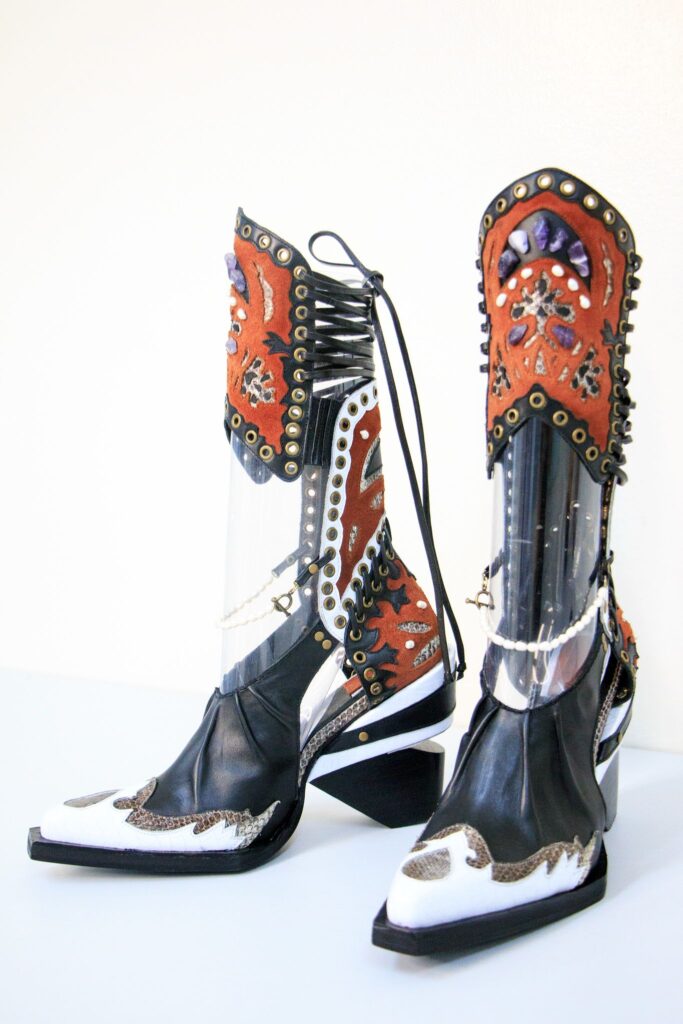
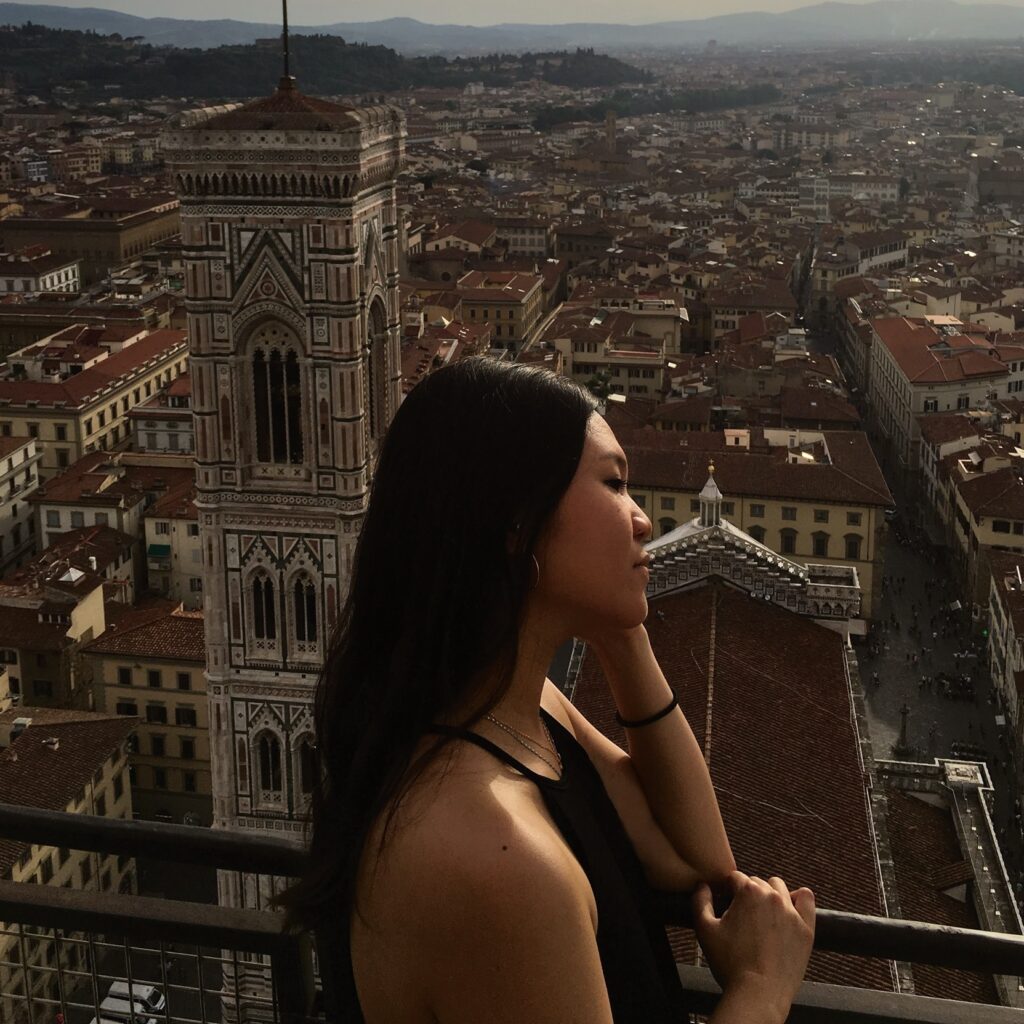
After the competition was postponed last March because of the nationwide lockdown, it finally pushed through in December, culminating with the announcement of winners last January 30. This year’s jurors were DTI’s Marcelina Alcantara, bag designer and SoFa’s Amina Aranaz-Alunan, Charter International’s Joey Enriquez, PFFI’s Zarah Juan and Monica Samson-Escaño.
Dubbed as “Sierra,” the lady’s boots, as described by winning designer Carla Apostol, “is a celebration of craftsmanship that pushes the boundaries of local artisans’ capabilities.” She also describes their collaborative effort as a “challenge and a nod” to what Filipino footwear designers like her can achieve if they strive to support the country’s shoemakers.
“Sierra’s” overall visual aesthetic mirrors nature: Smooth black calf leather from volcanic rocks; and white croc-embossed leather from ice and snow; and mohagony side from wood. For added visual flourish, Apostol incorporated her design with monochromatic snakeskin that forms part of the pair’s upper portion.
Organic forms are also echoed in the shoes’ floral cutouts, while pleating is said to resemble desert waves and sand dunes. The pair’s classic silhouette has been tried and tested over the decades to conform with the human form. What put it a notch above the typical Texas cowboy boots was Apostol’s inspired attempt to, in her own words, feminize it with “body-conscious lacing and front cutouts, which would have been otherwise covered by a conventional boot.”
She also incorporated her design with eye-popping accents such as antique brass hardware, roughly cut raw amethyst and freshwater pearls. Apostol was mentored by Rico Sta. Ana, while her design was produced by Zapateria.
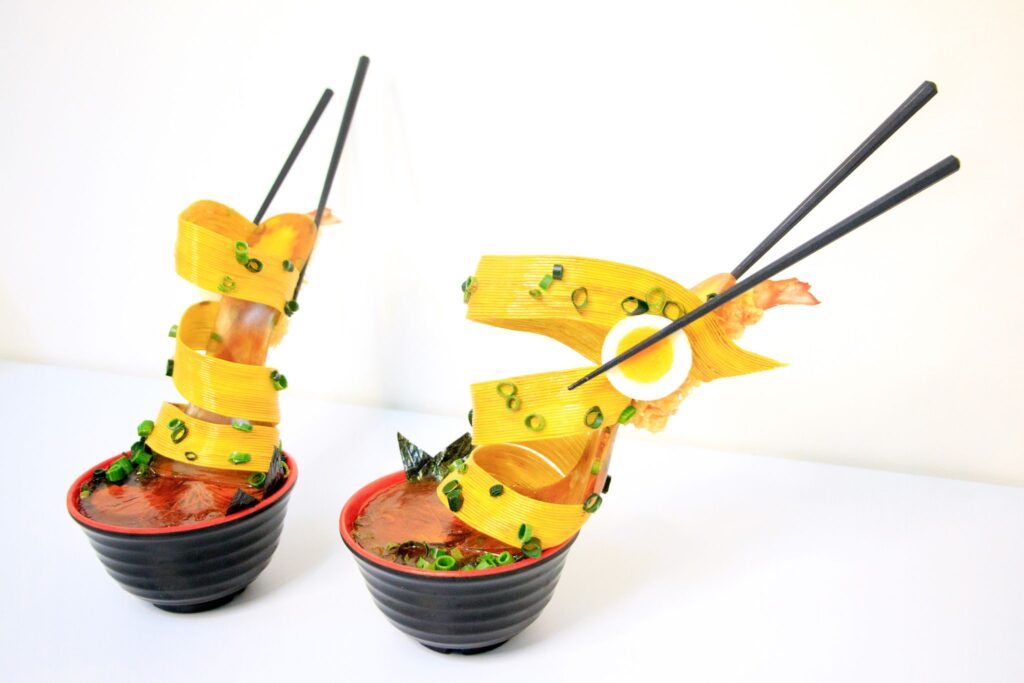
For designer Joel Wijangco, who bagged first runner-up honors, inspiration came in the form of food and an affirmation of his support for his ailing sister. Simply dubbed as “Sister’s Favorite,” the rather outlandish creation, which incorporates what appears like mini bowls as front platforms, is made of such materials as resin, rubber, plastic, metal, cable wires, fake banana leaves and chopsticks.
Since the shoes weren’t modeled on the ramp, we just don’t know if the pair is wearable at all since they don’t come with heels. By far, it’s the most visually intriguing entry in this year’s crowded field.
“My inspiration is my sister who’s a brave and strong woman,” says Joel. Having emerged from a bad year dominated by the raging pandemic, the designer’s woes were further compounded when he learned that his sister’s cancer came back for the third time.
“I wanted to create something that was fun and extraordinary to offset all the darkness,” he adds.
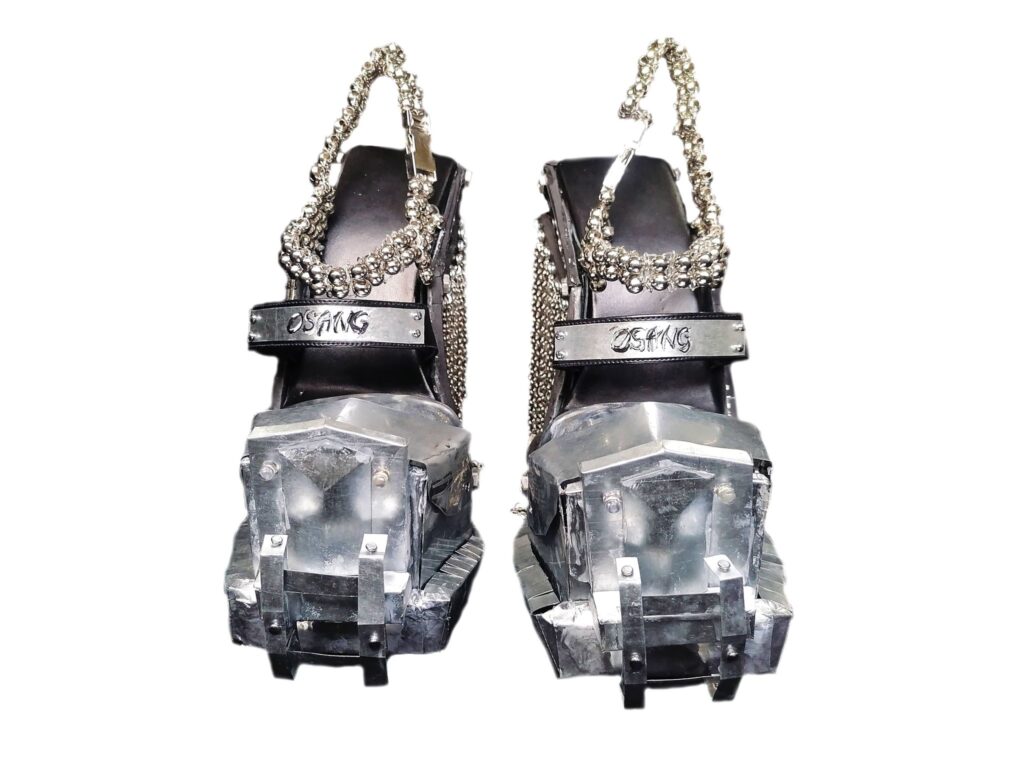
Finally, Janreyk Paler, this year’s second runner-up, also drew inspiration from real people to fashion a chunky pair of silver platforms that echoe the unique and somewhat garish beauty of the ubiquitous jeepney.
In keeping with theme, he named his entry “Osang – Queen of the Road.” Osang happens to be the name of Janreyk’s mother, a former jeepney barker. The designer’s homage also extends to his father, a former jeepney driver and Osang’s constant companion, as they picked up passengers on the road.
In lieu of color, the designer limited his entry to silver with touches of black. He used actual jeepney components such as metal sheets, round metal beads and knots and chains to fashion his entry.
“It’s an homage to family and a symbol of gratitude to a mother’s sacrifices,” he says. “I also used metal chain, silver and genuine leather to add texture and visual flourish to my shoes.”
“Osang” was also one of several entries which utilized the latest technology in footwear manufacturing at the DTI’s NCR office in Marikina. Dubbed as the country’s “shoe capital,” the town-turned-city also helped host the virtual event.
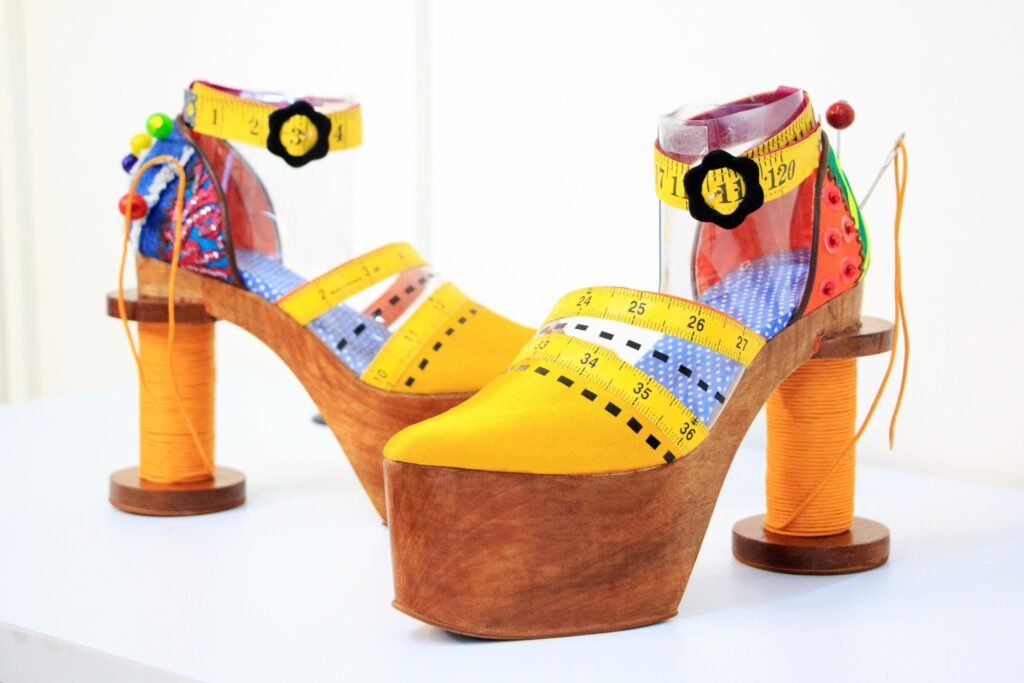
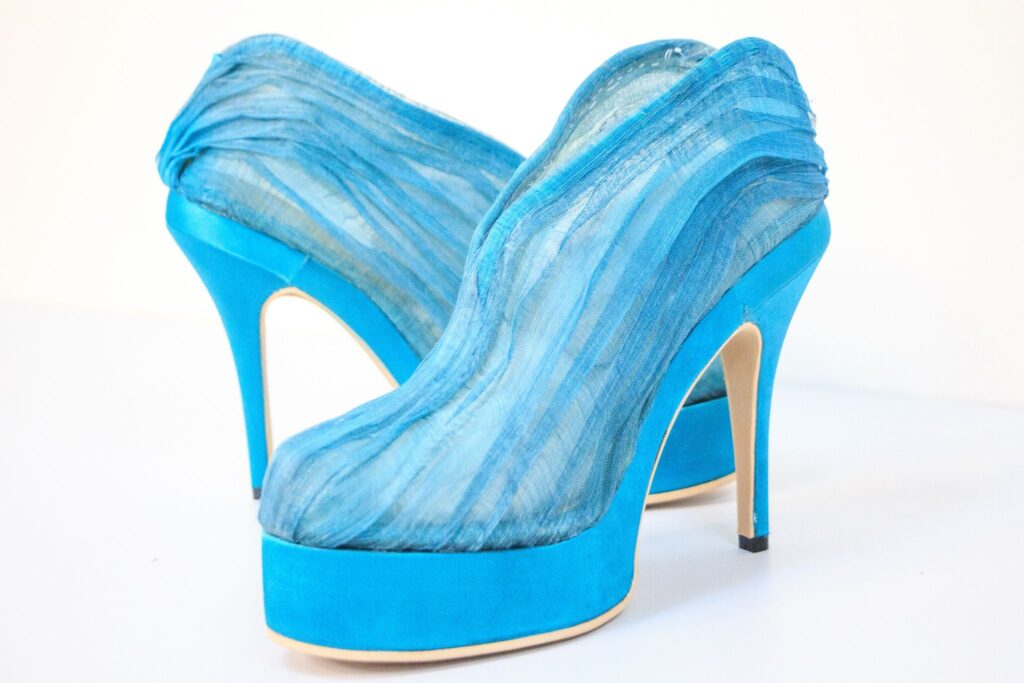
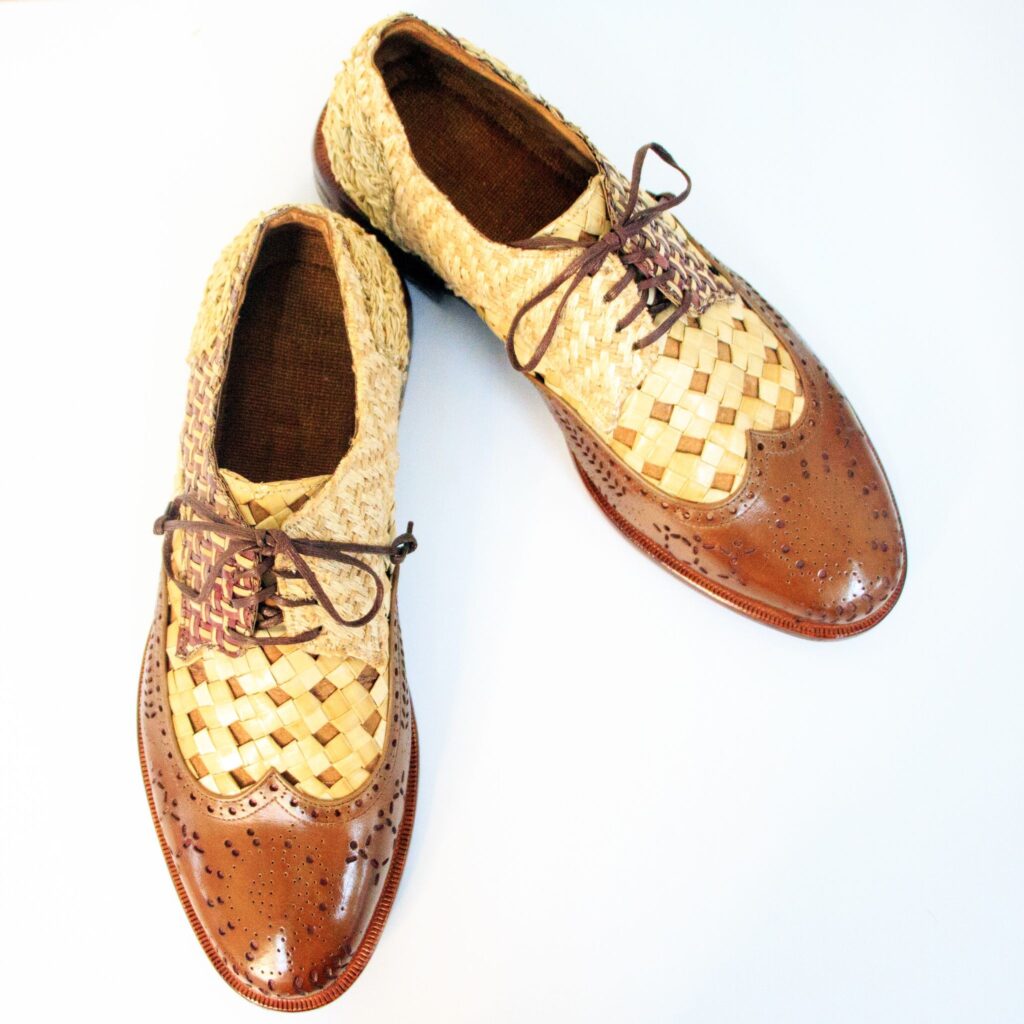
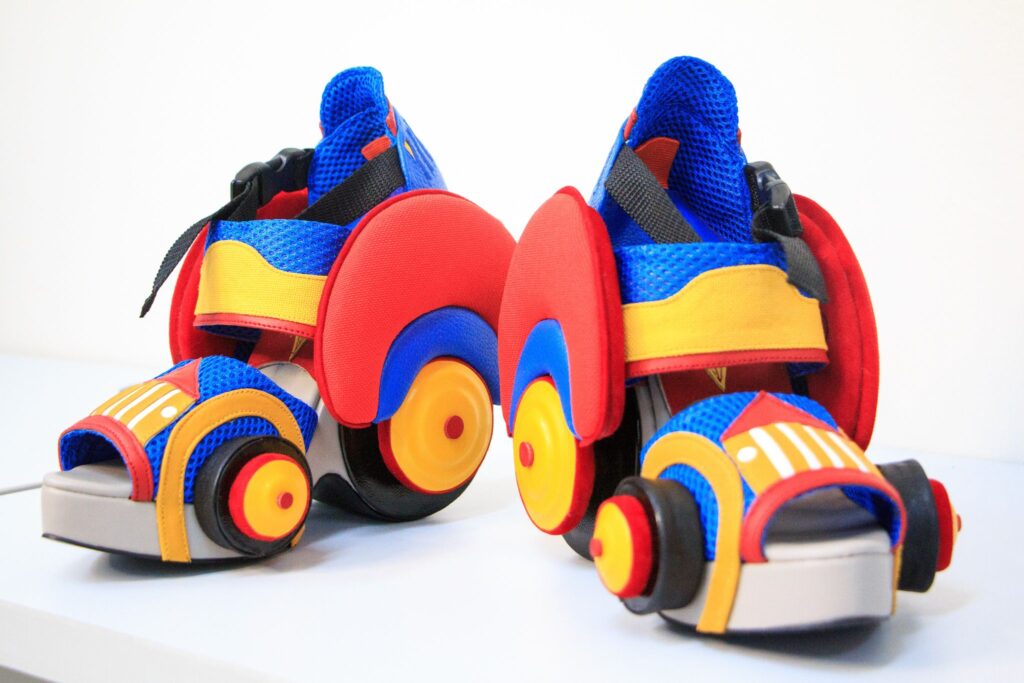
Completing this year’s list of entries are “Awit ng Mananahi,” a Kundiman-inspired piece written by the late National Artist Levi Celerio, by Michael Joseph Bawar; “Dyip Heels,” a colorful rendition of the iconic “king of the road” with rotating wheels, by Mark Boni Marter; “Hibla Habi,” woven men’s spectator shoes showcasing Filipino art, talent and culture, by Ivan Fabia; and “Kalinaw,” a pair of closed-toe platforms made of dyed piña inspired by undulating bodies of water, by Therese Paman.
All finalists will be competing in the next edition of the International Footwear Design Competition in Guangzhou, China.

